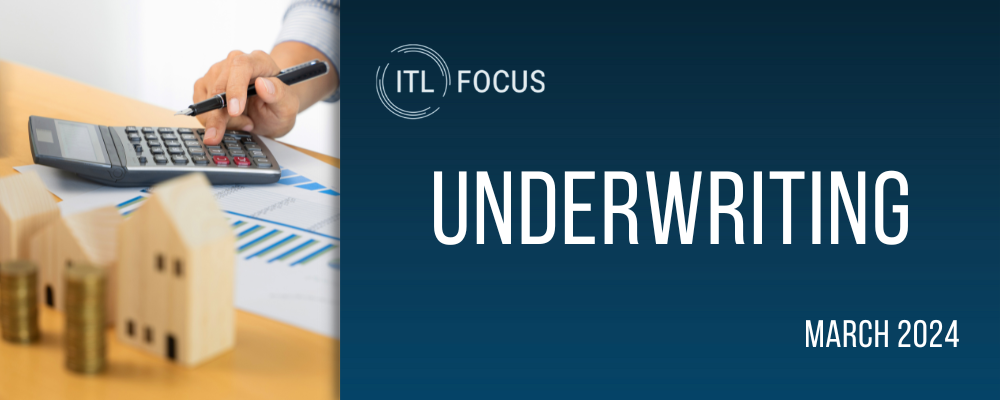To effectively produce a variety of new financial reporting, reserving and risk metrics, actuarial departments will need to modernize with new tools, hardware, processes and skills. This will be a significant undertaking, especially considering how most organizations and regulatory environments are constantly changing. Re-engineering projects will require careful planning and will affect people, processes and technology. Developing a modernization strategy that provides a path to real change includes visualizing a compelling future state, articulating and communicating expectations, defining a roadmap with achievable goals and avoiding overreach during the implementation.
Case for change
The insurance market has changed significantly in recent years, which has had a particularly pronounced effect on how companies operate, meet internal and external demands, report externally and comply with regulations. However, many insurers have not modernized their actuarial functions to keep pace with these changes and are struggling to effectively meet not just existing demands but also impending ones.
Specifically, drivers of actuarial modernization include:
- Internal drivers – The audit committee seeks assurance that reserves and risk-based capital are sufficient and being determined in a well-controlled environment. Senior management wants actuarial departments that work toward the same strategic goals as the rest of the company. Business units are looking for trusted actuarial advisers who can collaborate effectively with them, as well as develop practical solutions to complex problems to help them meet their business objectives. Lastly, the finance department needs timely insight into how the reserve movements affect earnings and equity.
- External drivers – The need to issue financial reports under multiple accounting bases necessitates the adoption of new processes as well as the collection of additional data. Similarly, regulatory requirements have mandated additional analyses, various views of the book of business and a push toward more forward-looking information. Other external parties, including investors and rating agencies, demand more information with a greater degree of transparency than ever before.
The modernized actuarial function
In a modernized company, the actuarial, finance, risk and IT functions have clearly defined, collective expectations and utilize common, efficient processes. More specifically, the following characterizes a modernized actuarial function:
- Data – The organization, with significant actuarial input, clearly defines its data strategy via integrated information from commonly recognized sources. The goal of this strategy is information that users can extract and manipulate with minimal manual intervention at a sufficient level of detail to allow for on-demand analysis.
- Tools and technology – Tools and technology enhance the effectiveness of the actuarial department by delivering information faster, more accurately and more transparently vs. the traditional, ad hoc computing done by end users. Specifically, tools that use data visualization can more effectively convey trends and results to management. Algorithms can be programmed to automate first-cut reserving and other actuarial analyses each reporting period based on rules that can help point staff to business segments that may require deeper analysis in the quarter.
- Methods and analysis – Modernized actuarial organizations enhance traditional actuarial methodologies with additional cutting-edge methods that yield superior insights (e.g., predictive analytics, which have transformed personal lines pricing and are being adopted in the commercial arena). Another example is stochastic analysis, which enhances deterministic approaches with statistical rigor, helps actuaries prepare transparent reserve range indications and enables management to better understand uncertainties.
- Processes – Operations are reviewed from the top down and well-defined in terms of controls, responsibilities, timing,and outputs, particularly in the quarter-close procedures for reserves. Automation of key processes is a primary organizational objective. Modernized actuarial organizations have streamlined processes that eliminate unnecessary or excessive evaluation.
- Organizational structure – The ability to deliver superior business intelligence to management often depends on how an organization uses its actuarial resources. Many companies are debating the merits of centralized, decentralized or hybrid organizational structures. While each structure has its own set of advantages and disadvantages, organizational structure is not the most vital factor in a function’s success. Rather, it is much more important that actuaries serve as trusted advisers to company stakeholders while fostering a culture of innovative thinking that identifies new information and opportunities to test, learn and scale.
- Reporting and governance – Strong governance, particularly around data, analysis review, challenge, issue escalation and resolution and reporting are cornerstones of a modernized actuarial function. Actuarial functions solicit stakeholder input on information demands and provides consistent, quarterly reporting packs that satisfy these stakeholders’ reporting demands. Additionally, modernized actuarial functions have formal policies and procedures that clarify the roles and responsibilities of management, reserve committees and the audit committee.
- Business intelligence – Modernized actuarial functions focus on providing operational metrics that meet individual stakeholder needs and objectively relate business performance. For example, senior managers often desire corporate dashboards that provide them access to real-time information on business performance to help them make strategic decisions.
Benefits of insurance modernization
A modernized actuarial function produces insightful, strategic information and allows the actuarial function to deliver the value management desires while meeting external stakeholders’ regulations and demands. Modernized actuarial functions have robust feedback loops within pricing, reserving and capital management. Additionally, the modernized actuarial function understands the business’ fundamental performance and takes an active role in helping management define the company’s future direction.
Modernization represents a fundamental shift in the actuarial function priorities. Traditionally, the actuarial function has provided a retrospective look at business performance despite various data, technology, process and personnel limitations. However, modernization seeks to address these limitations and allow the actuarial function the freedom to innovate, dig deeper into the business, provide forward-looking insights and have a strategic partnership with management.
At modernized insurers, tailored reports direct actuaries’ attention to portfolios with unusual characteristics. Automated programs quickly populate various templates for additional ad hoc analyses and drill-down investigation. Data visualization tools provide management comfort with findings and remediation recommendations. Cross- functional reporting and implementation teams fluidly improve on-the-ground results. Research features exploratory environments (“sandboxes”) and widespread data access that helps innovators discover emerging trends early, leading to potential differentiators. As an added benefit, actuarially modernized functions operate at a much higher level of efficiency, with greatly reduced levels of time needed for manual processing and data manipulation.
Factors for successful modernization/ key considerations
The thought of overhauling entire systems, processes and functional areas may feel overwhelming for company executives. This is understandable, as comprehensive modernization is a long journey that likely will have a significant price tag. As a result, many companies address modernization in steps. Although, in an ideal world with limitless resources, modernization could occur in a “big bang,” there is significant value in first addressing the areas in most need of modernization (while maintaining an overarching focus on holistic modernization). As one area becomes more streamlined and efficient, other areas will start to reap the benefits.
Regardless of the breadth of modernization initiatives, modernization strategies will require a holistic consideration of data, methods and analyses, tools and technology, actuarial processes and human capital requirements. These strategies will also need to address the business and operational changes necessary to deliver new business intelligence metrics. Any weak links between these closely connected components will limit the realization of actuarial modernization.
Although a modernization strategy should be holistic to avoid “digging up the road multiple times,” it is possible to tackle modernization issues in logical, progressive ways.
Achieving the vision
The first step is a comprehensive assessment of current processes and identifying the areas in greatest need of modernization. If we consider each modernization dimension (e.g., data, processes, technology, etc.) as a gear in motion, the first step to modernization involves identifying which gear in the function does not work in concert with the others. Stakeholders should collaborate on creating a comprehensive plan of action with an objective view of the dimensions that require immediate attention, while keeping in mind how each gear affects the organization as a whole.








